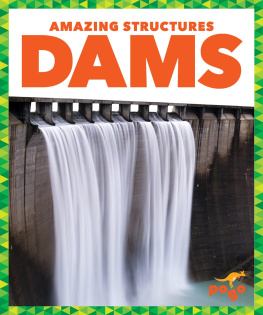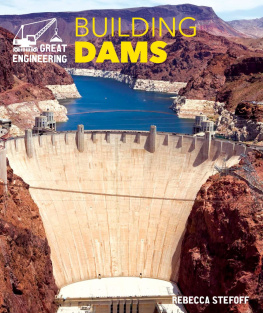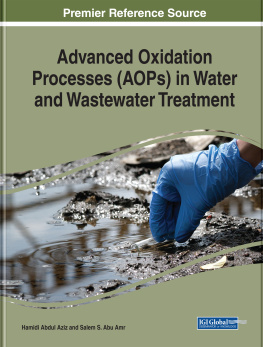Design and Production
INSTAP Academic Press, Philadelphia, PA
Library of Congress Cataloging-in-Publication Data
Betancourt, Philip P., 1936-
The dams and water management systems of Minoan Pseira / Philip P. Betancourt.
p. cm.
Includes bibliographical references and index.
ISBN 978-1-931534-66-6 (pbk. : alk. paper)
eISBN 978-1-623030-02-5
Mobi ISBN 978-1-623030-02-5
1. Pseira (Extinct city) 2. Pseira Island (Greece)Antiquities. 3. Excavations (Archaeology)GreecePseria Island. 4. Bronze ageGreecePseria Island. 5. Water-supply engineeringGreecePseria Island. 6. Irrigation engineeringGreece Pseria Island. 7. Architecture, MinoanGreecePseira Island. I. Title.
DF221.C8B563 2012 333.912093918dc23
2012003197
Copyright 2012
INSTAP Academic Press
Philadelphia, Pennsylvania
All rights reserved
List of Figures
Map of Crete.
Chronology chart for the Aegean Bronze Age.
Pseira as seen from Crete, looking north.
A red limestone lamp (HM 1106) and a triton shell with the interior coils removed to make it into a cup (HM unnumbered) found in Building AB.
Basket-shaped vase decorated with double axes (HM 5407), deliberately made with a hole in the base, found in Building BQ
Bull-shaped vessel with a hole in the back of the neck for filling and a smaller hole at the mouth for pouring (INSTAP-SCEC no. PS 3643).
Ridge Road in the settlement on Pseira, looking south, with Building AC (the shrine) on the left.
Reconstruction of the upper part of one of the women in the relief fresco in the Pseiran shrine, by Maria C. Shaw (rendering by Giuliana Bianco).
Marine Style vases from Pseira: a) bridge-spouted jug decorated with argonauts (HM 5381) found in Building BE; b) ovoid rhyton decorated with dolphins (HM 5408) found in Building BQ
Aerial photograph of Pseira showing the location of several features
Plan of the settlement at Pseira at the height of its size in LM IB
Middle Minoan and Late Minoan terraces, groups of terraces, and other mapped locations on Pseira Island
Water management system associated with Dam M9
Dam M9 looking upstream in 2010
State plan of Dam M9 showing elevations above sea level
Tumble of boulders downstream from Dam M9 in 1990
Sections through the ravine of Dune Creek 30
Dam M9 before excavation in 1990 31
Dam M9 after excavation in 1990
Detail of Figure 19 showing the excavated part of the structure
Dam M9 as seen from the uphill side in 1990
The flat capping stones in situ at the southern end of Dam M9 in 1990, looking northeast
Cross wall at the northeastern end of Dam M9 in 2010
The water management system associated with Dam M29
Sections across Middle Creek
State plan for Dam M29 showing the elevations above sea level
Surviving part of Dam M29, looking northeast in 1990
Detail of the surviving parts of Dam M29 near the center of the structure
Dam M29 looking southwest in 1989, showing west part of dam with remaining core
Terrace wall G2 showing the front of the terrace, looking northeast, in 1990
Plan of the trench location in Terrace G2
Section for Terrace G2
Section for Terrace Q21
The shrine building at Pseira
LM IB sherds from the fill behind Dam M9 compared with similar pieces from Block AF in the Pseiran settlement.
Spout from a LM IB jug from Dam M9 compared with a fragmentary LM IB jug from Block AF in the Pseiran settlement.
Topographic map of Pseira with the stream courses for Site Creek, Middle Creek, and Dune Creek depicted and corresponding watershed areas.
Longitudinal topographic profiles along the thalweg of Dune and Middle Creeks.
Geologic cross-section across Dune Creek at the position of the dam at excavation site M9, illustrating the topography across the stream.
Preface
When the Temple University archaeological project was excavating at the Bronze Age seaport on Pseira Island and Richard Hope Simpson discovered two massive stone and soil dams that were built in the middle of the second millennium B . C ., we knew we had opened a new chapter in prehistoric engineering and water management. What we did not realize at the time was that these dams were not isolated constructions in the countryside, but parts of very sophisticated water retention systems. The Pseirans added retaining walls to prevent erosion, massive dams with associated reservoirs, and small check-dams to ravines that reached over one hundred meters in length in order to control water runoff and make it available for human use. Additional examples of Minoan dams have now been recognized at Gournia, Choiromandres, and perhaps Chalinomouri (all in eastern Crete), so we know that these Bronze Age projects were well known to Minoan builders as one of the options available to them to improve their agricultural potential. The restudy of the Pseiran examples over 20 years after they were discovered results in a much better appreciation of how they were used.
The opportunity to take a fresh look at the Pseiran water management system was inspired by the purchase of a differential Global Positioning System (dGPS) unit by the INSTAP Study Center for East Crete (INSTAPSCEC). The unit uses satellite links to establish points for measuring and mapping, and a trained operator can map a region in a single day in a way that would once have required weeks. The unit is especially useful in a rugged topography like the island of Pseira where in many places no
previously surveyed points are visible for measuring. We are extremely grateful that the INSTAP Study Center offers this service to archaeological projects; and the results achieved for this study contribute substantial amounts of new information on the little known subject of Minoan water conservation and control. Agriculture was one of the cornerstones of the Bronze Age Cretan economy, and the ways to improve it must have been a major concern for those who depended on it for their existence.
Philip P. Betancourt
2011
Acknowledgments
The additional study that was directed to the dams on Pseira is indebted to a great many people. First, thanks are due to Richard Hope Simpson for doing such a splendid job of excavating and publishing these monuments of Minoan engineering and to my good friend and colleague Costis Davaras who collaborated with me for the excavations when the dams were discovered about 20 years ago. The clear presentation of the primary evidence by Richard was essential to our present understanding of how the dams functioned. The new work was conducted under permits issued by the Greek Ministry of Culture, and we are grateful to Vili Apostolakou, director of the 24th Ephorate of Classical and Prehistoric Antiquities, and Jack Davis, Director of the American School of Classical Studies at Athens, for arranging for the permits. The Institute for Aegean Prehistory (INSTAP) and Temple University, both located in Philadelphia, Pennsylvania, provided financial support. The new project was made possible by Thomas Brogan, director of the INSTAP Study Center for East Crete in Pacheia Ammos, Crete. Floyd McCoy is grateful to Sherry Fox and the other personnel of the Wiener Laboratory and the American School of Classical Studies at Athens for expediting his work there. Antonia Stamos and Doug Faulmann used the differential GPS to measure the dams and their setting. Computer processing was accomplished by Antonia Stamos, Susan Ferrence, and the authors. Thanks are extended to Stella Chryssoulaki, who read the manuscript and made many helpful suggestions. Yannis, Aristidis, and Maria Chalkiadakis were gracious hosts at the Tholos Beach Hotel in Kavousi, Crete, and special thanks are due to Yannis for transporting the team to the little island with speed and safety.













